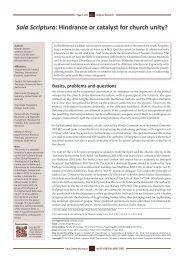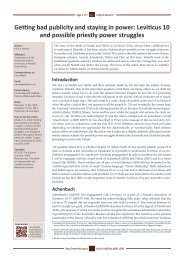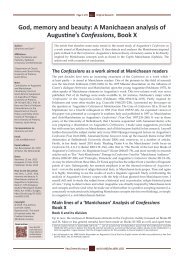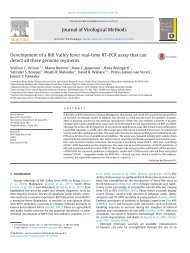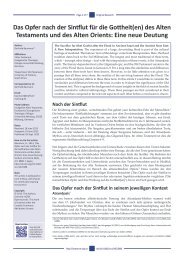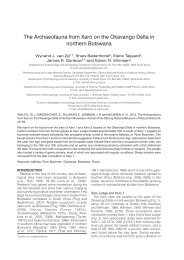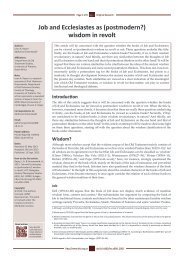Revised nomenclature and classification of inherited ichthyoses ...
Revised nomenclature and classification of inherited ichthyoses ...
Revised nomenclature and classification of inherited ichthyoses ...
You also want an ePaper? Increase the reach of your titles
YUMPU automatically turns print PDFs into web optimized ePapers that Google loves.
JAM ACAD DERMATOL<br />
VOLUME 63, NUMBER 4<br />
Fig 6. Concept for diagnostic approach. Diagnosis is based on dermatologic evaluation,<br />
careful family <strong>and</strong> medical history, <strong>and</strong> can be strongly supported by directed morphologic<br />
examinations <strong>and</strong> other special analyses. If available, molecular analyses are suggested to<br />
confirm diagnosis, allow for testing <strong>of</strong> family members, <strong>and</strong> prenatal diagnosis.<br />
feature <strong>of</strong> TGase-1 deficiency, 211 aberrant vesicular<br />
structures may indicate NIPAL4 (;ICHTHYIN )<br />
mutations in ARCI, 33 <strong>and</strong> trilamellar membrane aggregations<br />
in the SC <strong>and</strong> SG (EM type IV) are<br />
pathognomonic for ichthyosis prematurity syndrome.<br />
89 Detachment <strong>of</strong> the SC from the SG with<br />
asymmetric cleavage <strong>of</strong> corneodesmosomes is a<br />
specific feature <strong>of</strong> NS. 165,212<br />
The image <strong>of</strong> the SC as viewed by conventional<br />
EM is still artifactual. In frozen sections, where lipid<br />
extraction is avoided, eg, by hydrophilic staining<br />
procedures, the compact structure <strong>of</strong> the SC can be<br />
appreciated. Similarly, the recent development <strong>of</strong><br />
both osmium tetroxide <strong>and</strong> ruthenium tetroxide<br />
postfixation enables improved visualization <strong>of</strong> extracellular<br />
lipids, postsecretory changes in LB contents,<br />
<strong>and</strong> alterations <strong>of</strong> the lamellar bilayers in the<br />
SC, eg, lamellar/nonlamellar phase separation. 7 The<br />
combination <strong>of</strong> all alterations observed with this<br />
technique may be diagnostic for many forms <strong>of</strong><br />
ichthyosis. 8 Most importantly, the ultrastructural<br />
demonstration <strong>of</strong> disturbances <strong>of</strong> lipid metabolism<br />
Oji et al 633<br />
gives valuable insights into the pathophysiologic<br />
basis <strong>of</strong> many <strong>ichthyoses</strong> 11,60,159-164 <strong>and</strong> enables a<br />
function-driven approach. 7,8,11<br />
Histopathology, immunochemistry, <strong>and</strong> other<br />
nongenetic analyses<br />
Routine histopathological findings in most <strong>ichthyoses</strong><br />
are nondiagnostic, <strong>of</strong>ten demonstrating only<br />
epidermal hyperplasia <strong>and</strong> varying degrees <strong>of</strong> orthohyperkeratosis.<br />
In combination with characteristic<br />
features, routine histology can give an important clue<br />
for IV 213,214 or EI. 52,61,62,215,216 However, one should<br />
consider that a reduced or absent SG suggestive for IV<br />
can also be seen in acquired ichthyosis, NS, Refsum<br />
syndrome, TTDs, or Conradi-Hünermann-Happle<br />
syndrome. Hair mounts can demonstrate bamboo<br />
hairs (trichorrhexis invaginata) in NS 123 ; although not<br />
invariably present, bamboo hairs are pathognomonic<br />
<strong>of</strong> this disorder. Parakeratosis <strong>and</strong> hypergranulosis is<br />
regarded a histopathological clue to loricrin keratoderma.<br />
96,205 Polarization microscopy can demonstrate<br />
the tiger-tail pattern <strong>of</strong> TTD, 217,218 which



